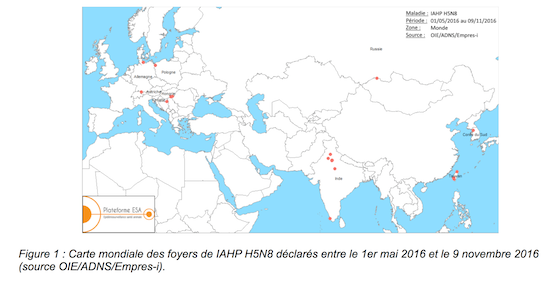A highly pathogenic strain of avian influenza has been identified in 8 European countries. The Ministry of Agriculture has tightened safety rules.

The migratory season ends with a major threat. H5N8 avian influenza has been detected in eight European countries. Corpses of wild birds have been found as far away as Switzerland, on the shores of Lake Constance, on the border between Germany and Austria. The Ministry of Agriculture therefore reinforce biosecurity rules in France. Poultry farmers are encouraged to protect their backyards.
The strain spotted in Europe is highly pathogenic in birds. The risk of transmission to humans, on the other hand, is considered low. But the virus is spreading very quickly in Europe: in a few months, it has spread from Croatia to the Netherlands. The migratory season, which started in mid-September, probably comes into play.

Source : The Minister of Agriculture
On its site, the Ministry of Agriculture is reassuring. “This episode has no connection with the epizootic encountered in the South-West at the beginning of 2016”, he explains. The news remains worrying for breeders. A first wave of cases was declared in 17 departments at the start of the year. It resulted in a crawl space and confinement that did not end until September.
4 regions at risk
In order to avoid any recurrence, the ministry has raised the risk level to moderate. A decision which launches a whole series of preventive measures. Surveillance will be stepped up, particularly in areas where wildlife can visit. The objective is to react “as quickly as possible to eradicate any new outbreak”. The ministry also calls for the vigilance of every citizen.
Breeders are also invited to protect their animals: a protective net or confinement is now required. This helps to avoid contact with wild birds. Additional measures may be required in the most exposed areas. The National Health Security Agency (ANSES) was seized. Its role will be to define them within 8 days.
The Ministry of Agriculture has already identified certain regions that are particularly at risk: Haut-de-France, Grand-Est, Bourgogne-Franche-Comté and Auvergne-Rhône-Alpes. The gathering of birds and releases may be prohibited if ANSES confirms this.

.
















